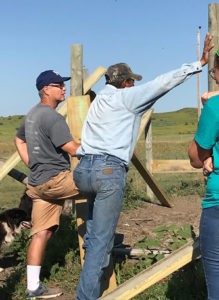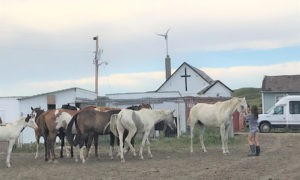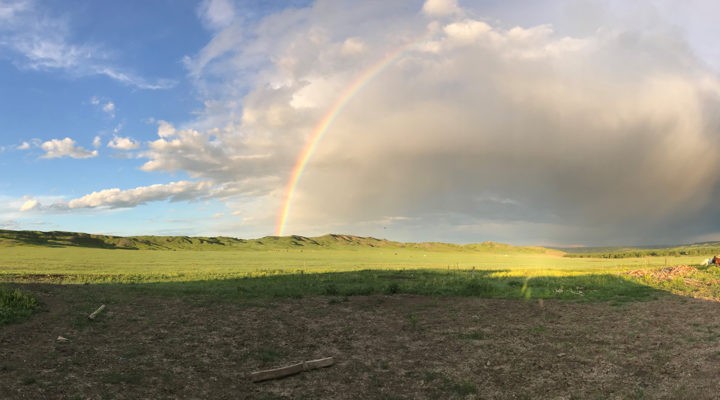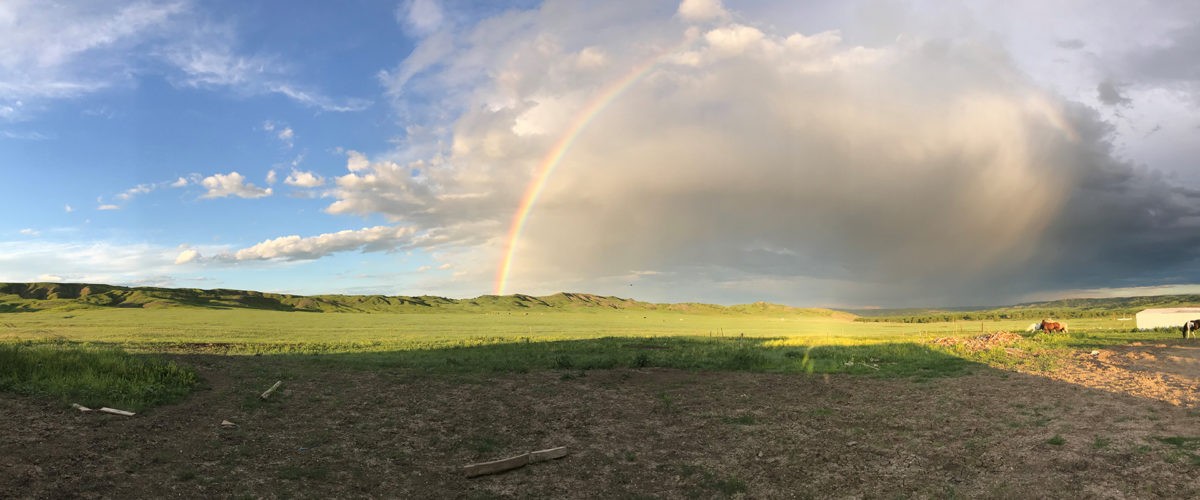For two decades, members of Second Baptist Church in Liberty, Mo., have found transformational relationships 700 miles away with friends of the Lakota people who live on the Upper Cheyenne Reservation in South Dakota.
“To be able to call someone from another culture ‘friend’ has had an immensely transformational effect for me and for our congregation,” said Mike Lassiter, retired associate pastor at Second Baptist Church. “It has helped me to understand Scripture better and to understand my own spirituality by having it filtered through their culture.”
Lakota residents of the Bridger/Takini community feel the same way.
 “They have been building relationships here for 20 years. We all look forward to when they come,” community advocate Beth Lone Eagle said. “People in our community stay in touch with them throughout the year. They really are a boost for us.”
“They have been building relationships here for 20 years. We all look forward to when they come,” community advocate Beth Lone Eagle said. “People in our community stay in touch with them throughout the year. They really are a boost for us.”
Second Baptist’s annual trip to Bridger, S.D., was inspired by Together for Hope, the Cooperative Baptist Fellowship’s rural poverty initiative. Their commitment is part of the initiative’s 20-year campaign to serve the nation’s 20 poorest counties. Ziebach County, where Bridger and neighboring communities are located, is always among the top of that list.
Like other Together for Hope projects, Second Baptist set out to learn from asset-based community development principles on the Upper Cheyenne Reservation to avoid the kind of condescending, toxic charity practices historically associated with short-term Christian missions projects, said Karen Rogers, lay missions coordinator at Second Baptist.
“We are not there to give handouts or to try to change their way of life or interfere with their spirituality,” she said.
As a result of the friendships produced, the two partners recently agreed to extend their cooperation another five years. “And we are going to celebrate our history together,” Rogers said.
Before the COVID-19 pandemic made trips to the reservation impossible this year, the Missouri church sent three groups to South Dakota annually. The middle school, high school and all-church groups journeyed separately for roughly one-week stays every summer.
While these trips have included community service components, the focus has been more on establishing consistent bonds, which has inspired some church members to visit Bridger independently, and for longer stays, through the years.
“Even the youth in middle and high school were there to build relationships with other youth in the community and to learn about their culture.”
“It’s all about establishing relationships and coming alongside people there,” Rogers said. “Even the youth in middle and high school were there to build relationships with other youth in the community and to learn about their culture.”
It took time for those connections to take, she added. “In the beginning we were just one more outsider white group coming in to do something. They are used to these helicopter mission groups who come in and decide what needs to be done, do it and then leave.”
The Native American community eventually came to realize this group of Baptists was not there to attempt to pull them away from their culture and traditions, Rogers said. “They have come to recognize this is a church that is going to be back. They trust our presence and know we are not trying to work our own agenda.”
That trust has resulted in occasional invitations to Lassiter and a handful of other church members to participate in rituals at Native American sweat lodges and powwows, among other sacred events.
“Looking back, that’s powerful stuff,” Lassiter said. “Everything we did like that was done by invitation. We didn’t ask. We let them lead.”
Some Second Baptist members also joined Lakota in protesting the opening of nightclubs near sacred spaces, Rogers said. “One of our goals when this partnership began was helping with the reconciliation of how white folks have violated some of these sacred spaces.”
 A key early approach was to partner with the late Byron Buffalo, once the community’s leader and pastor of a United Church of Christ parish in Bridger. Second Baptist remains committed to ministries begun by Buffalo, including a horse-riding project to educate Lakota youth about their history and heritage.
A key early approach was to partner with the late Byron Buffalo, once the community’s leader and pastor of a United Church of Christ parish in Bridger. Second Baptist remains committed to ministries begun by Buffalo, including a horse-riding project to educate Lakota youth about their history and heritage.
“The purpose is to reintroduce the youth of the surrounding area to the horse culture of the plains, to help them feel some rootedness and feel connected to that ancestry,” Rogers said.
During the summer of 2020, Second Baptist partnered with other CBF congregations to purchase desktop and laptop computers to be used in the community center operated by Lone Eagle. These enable children to attend school virtually and help others to access telemedicine services. In addition, 25 transistor radios were purchased so residents can listen to tribal radio for weather and COVID-19 reports.
“We ordered it all on Amazon and had it shipped to them,” she said. Later, she and Lassiter personally delivered rugs, a freezer and home-made hand sanitizer to Lone Eagle in an up-and-back trip.
The Lakota also have visited Liberty multiple times. “They have come to our church to share their traditions, the history and their hopes and dreams,” Rogers said. “They have blessed us with their presence.”
Second Baptist member Jordan Groves, 45, has been making the trip 18 years on both group visits and on month-long trips alone or with another member.
“The one-and-done kind of mission trips I have done in my past were not nearly as fulfilling as building relationships by going back year after year,” he said. Groves said he has gotten to watch some Lakota grow from childhood to adulthood, which has been a profound experience resulting in many friendships.
“These are friends I will care about and contact even if our church weren’t still involved up there.”
“These are friends I will care about and contact even if our church weren’t still involved up there,” he said. “Every week or two weeks, we exchange text messages with each other. I have not seen them for a year-plus now, but we’re keeping in touch.”
Those relationships also have been religiously transformative, he added. “It certainly has challenged my faith in certain ways. I have learned so much as I have gotten to know some amazing folks who practice a spirituality so different from my own.”
Lone Eagle said the partnership with Second Baptist has left people equally challenged and transformed in Bridger.
“Take my own sons for example,” she said. Groves has helped them learn to play the guitar — instruction they could not receive in a community that has no stores or services. He even helped one of them explore professional options off-reservation.
“The kids already had a relationship with Jordan, but their interest in music solidified those bonds,” she said. “I know he has had an impact like that with others here.”
The partnership also has provided Lone Eagle with guidance in her grant-funded role as community advocate, she said. “When I was hired a year ago, I was able to talk to Mike (Lassiter) and Jordan (Groves) about it because they have cultivated so many relationships here.”
Learn more about Together for Hope here.


